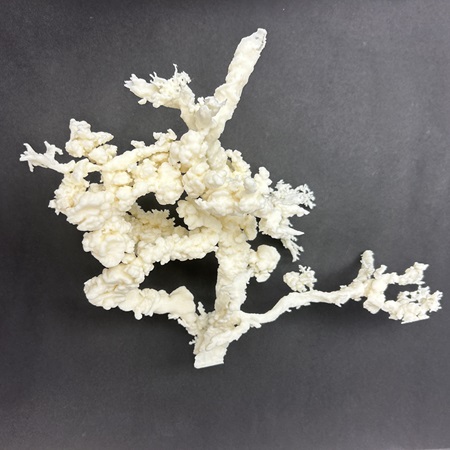3D Genomic Profiling Technique Reveals Precancerous Pancreatic Lesions
Posted on 20 Jun 2024
Small precancerous lesions in the pancreas, known as pancreatic intraepithelial neoplasias (PanINs), are precursors to some of the most aggressive and deadly forms of pancreatic cancer. Due to their minute size, PanINs are difficult to detect and are not visible through standard radiological examinations. Consequently, patients often receive a diagnosis of pancreatic cancer, such as pancreatic ductal adenocarcinoma (PDAC), only after the cancer has advanced and spread to other organs. Traditional 2D histological staining techniques, which involve slicing tissues thinly, staining, and examining them under a microscope, offer only a limited view of PanINs, failing to throw light on their origins and how they progress to cancer. To gain a clearer understanding of PanINs, researchers have now designed a 3D approach.
This novel 3D genomic profiling method, developed by researchers at Johns Hopkins Medicine (Baltimore, MD, USA), successfully identifies PanINs and provides the most comprehensive 3D map of precancerous lesions in the human pancreas to date, paving the way for early detection strategies for PDAC and other pancreatic cancers. After processing tissue from 38 normal pancreatic samples into hundreds of sequential 2D slides, the researchers employed CODA, a machine-learning pipeline, to analyze and transform these slide images into digital 3D models.

These 3D reconstructions uncovered complex networks of interconnected PanINs, showing an average density of 13 PanINs per cubic centimeter, with a range varying from 1 to 31 PanINs per cubic centimeter. Observations indicated that patients with PDAC elsewhere in the pancreas tended to have a higher PanIN burden compared to those with nonductal diseases, although the differences were not statistically significant. The team also conducted further analysis on eight of the samples through 3D-guided microdissection and DNA sequencing of specific PanINs. The genomic analysis revealed that these networks consisted of genetically distinct PanINs, each driven by different gene mutations, including mutations in the KRAS gene, a common precursor in most pancreatic cancers. This discovery of multiple independent mutations within precancerous lesions is unprecedented in other organs. While the CODA technology is not yet suitable for diagnostic use, its potential extends beyond pancreatic diseases as it can be adapted for various tissues, diseases, or model organisms.
“Not many people actually develop pancreatic cancer, so we were shocked to find a lot of precancer, or PanINs, within the normal regions of the pancreas,” said Laura Wood, M.D., Ph.D., associate professor of pathology and oncology at the Kimmel Cancer Center and the Johns Hopkins University School of Medicine and one of the study’s senior authors. “This research highlights what we don’t yet know about normal aging and raises fundamental questions about how cancer arises in the human pancreas.”
“This is just the beginning,” Wood added. “We want to continue to investigate what this means in the context of other organ tissues. If normal tissue has thousands of PanINs, then how do we identify which ones are clinically relevant to disease and which ones are not?”
Related Links:
Johns Hopkins Medicine




 assay.jpg)



 (3) (1).png)




